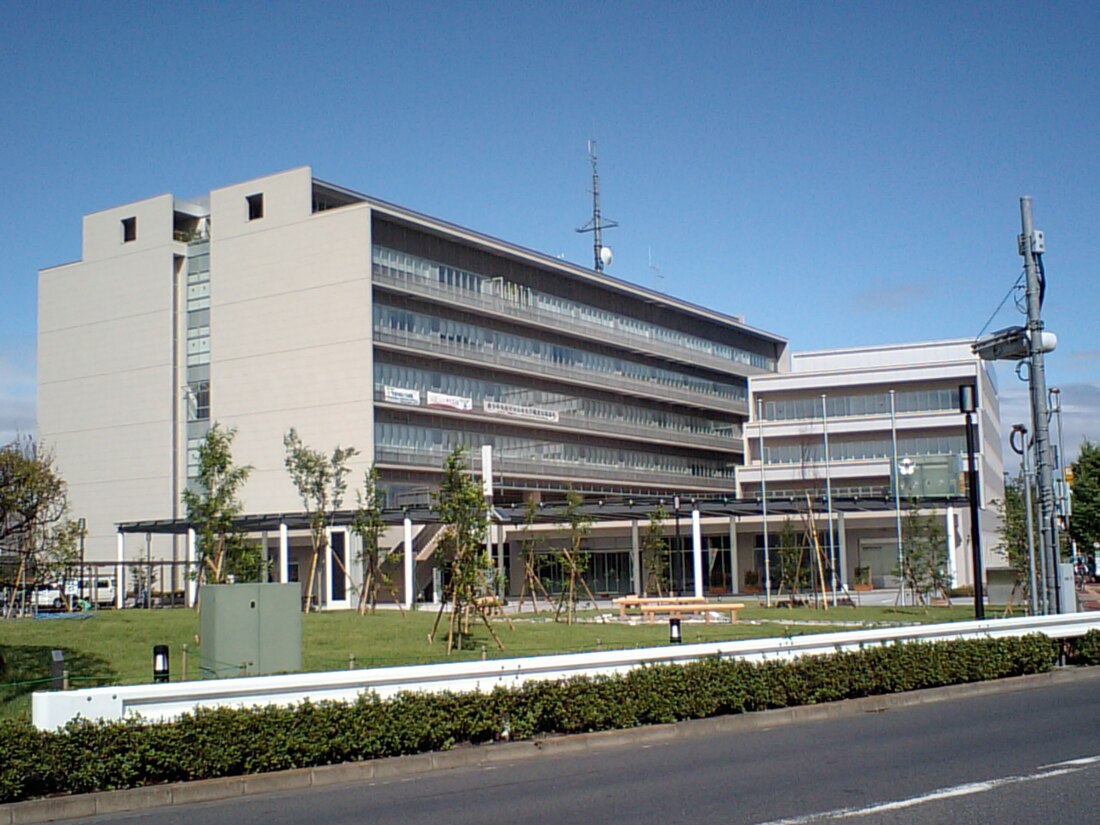Top Qs
Timeline
Chat
Perspective
Ōme, Tokyo
City in Kantō, Japan From Wikipedia, the free encyclopedia
Remove ads
Ōme (青梅市, Ōme-shi) is a city located in the western portion of the Tokyo Metropolis, Japan. As of 1 May 2023[update], the city had an estimated population of 131,128, and a population density of 1300 persons per km2.[1] The total area of the city is 103.31 square kilometres (39.89 sq mi).
Remove ads




Remove ads
Geography
Summarize
Perspective
Ōme is located in the Okutama Mountains of western Tokyo, bordered by Saitama Prefecture to the north. The Tama River runs from west to east almost in the center of the city area, and the Kasumi River and Naruki River, which are tributaries of the Iruma River (Arakawa River system), also flow from west to east in the north. The geography changes from the flat land in the east to the hills and mountains in the west. The highest point is 1,084 meters on Mount Nabewariyama on the right bank of the Tama River in the western end of the city.
Surrounding municipalities
Climate
Ōme has a humid subtropical climate (Köppen Cfa) characterized by warm summers and cool winters with light to no snowfall. The average annual temperature in Ōme is 12.3 °C. The average annual rainfall is 1998 mm with September as the wettest month. The temperatures are highest on average in August, at around 23.8 °C, and lowest in January, at around 0.7 °C.[2]
Remove ads
Demographics
Per Japanese census data,[5] the population of Ōme saw strong growth throughout the late 20th century but has begun to decline in the early 21st. According to the Ministry of Health, Labor and Welfare's National Institute of Population and Social Security Research, Ōme's population is expected to fall to 104,000 by 2040, a decline of 25.3% from 139,000 in 2010.[citation needed]
Remove ads
History
The area of present-day Ōme was part of ancient Musashi Province. Ōme developed in the Edo period as a post station on the Ōme Kaidō highway. In the post-Meiji Restoration cadastral reform of July 22, 1878, the area became part of Nishitama District in Kanagawa Prefecture. The town of Ōme was created on April 1, 1889, with the establishment of modern municipalities system. Nishitama District was transferred to the administrative control of Tokyo Metropolis on April 1, 1893. Ōme was elevated to city status on April 1, 1951, by merging with the neighboring villages of Kasumi and Chōfu. Later in 1955, four additional villages (Yoshida, Mita, Kosoki, and Nariki) merged with Ōme.
Government
Ōme has a mayor-council form of government with a directly elected mayor and a unicameral city council of 24 members. Ōme contributes one member to the Tokyo Metropolitan Assembly. In terms of national politics, the city is part of Tokyo 25th district of the lower house of the Diet of Japan.
Education
- Meisei University - Ōme campus
The city has two public high schools operated by the Tokyo Metropolitan Board of Education.
- Ome Sogo High School
- Tama High School
Tokyo Metropolis also operates one special education school for handicapped students.
- Seiho Gakuen School
Ōme has 17 public elementary schools and 11 public junior high schools operated by the city government.
Municipal junior high schools:[6]
Municipal elementary schools:[7]
Remove ads
Transportation
Railway
- Kabe - Higashi-Ōme - Ōme - Miyanohira - Hinatawada - Ishigamimae - Futamatao - Ikusabata - Sawai - Mitake
- Mitake Tozan Railway
Highway
Sister cities
Local attractions
- Mitake Shrine
- Mount Mitake
- Ome Marathon
- Ome Railway Park
- Ome Kimono Museum
- Ome Plum Park (Japanese Wikipedia)
References
External links
Wikiwand - on
Seamless Wikipedia browsing. On steroids.
Remove ads





